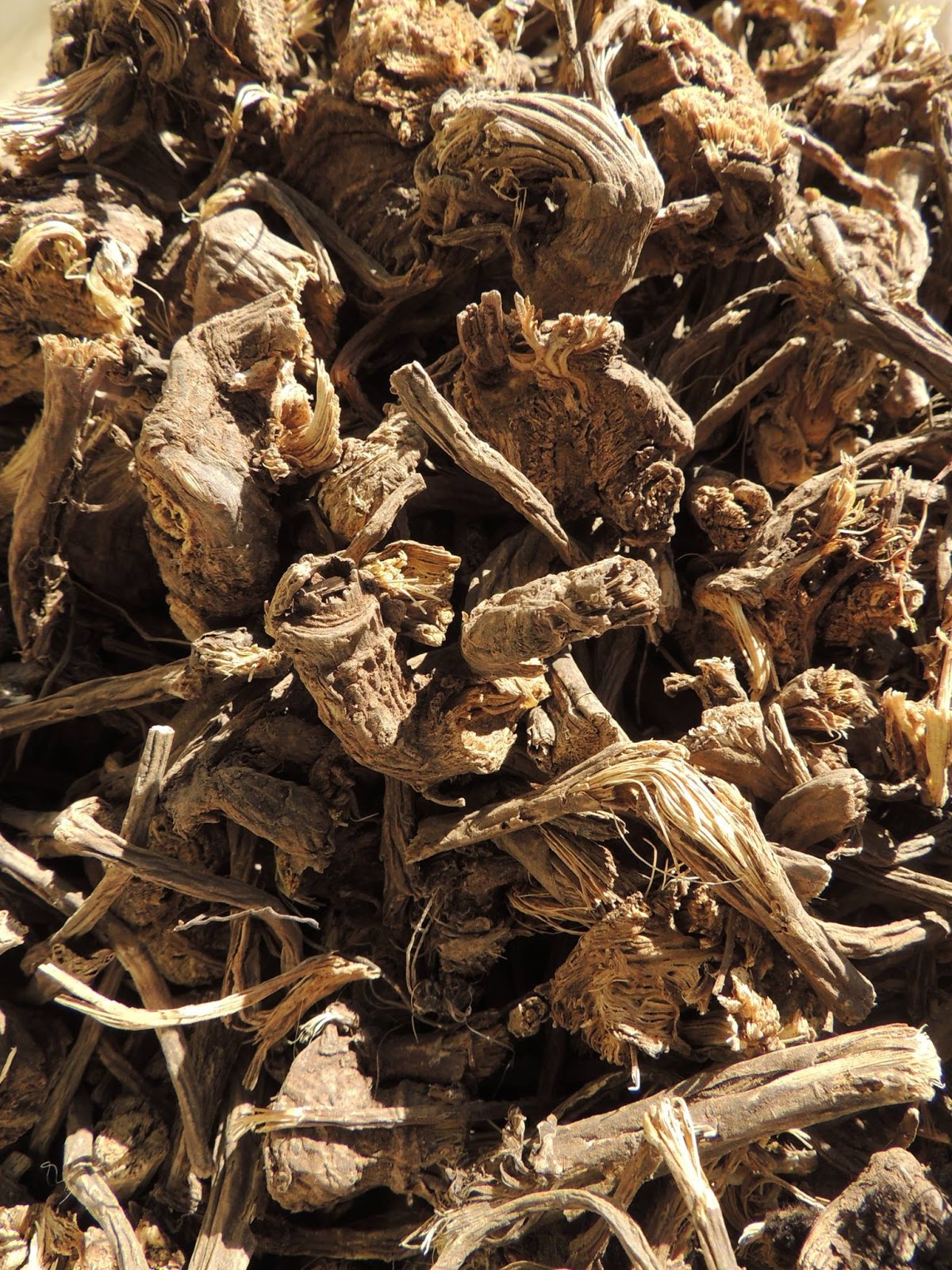Family - UMBELLIFERAE
(APIACEAE)
Local name(s) - Chora, Choraka, Gandrayan,
Distribution -
Western Himalaya from Kashmir to Shimla, 2700-3000 m (Chopra et al., 1956). In
H.P. it is reported from Dhauladhar range, Hattu, Narkanda, Chhota Bhangal and
Bara Bhangal, Chamba, Kalatop, Luwayin-Lohardi forest (2600 m), Mariarha forest
(2700 m), Panju onway to Talra Thatch, Polri Thatch (2800 m), Jaldayan Thatch
(3200 m), Munekh forest (2600 m). Dhola-Bagi (Rohru) in the shadeof broadleaved
mixed spruce forest (2400 m). (Chauhan, N.S., 679,722, 1999, 2060, 2236, 2312,
2346, 2450 and 2621).
Description -
A, tall, robust, erect, aromatic, perennial herb 1 to 1.5 m tall with thick,
stout, perennial rootstock. Roots are brownish, long, fleshy branching. Thick,
annulate, fusiform. Resinous and pungently aromatic. Leaves are pinnately
divided, the basal ones are ternate pinnate. Leaflets oval to irregularly
mucronate, serrat; upper surface dark green, lower glaucous. Flowers white or
purple in long stalked compound umbels. Fruit: glabrous, flattened, oblong, 12
x 7 mm. the roots and rootstock become
thick and increase with age.
Flowering/Fruiting -
July-September.
Parts used - Dried roots
and rootstocks.
Current
market rate - Rs. 450/Kg.
Main ingredients - Dry roots yield 1.3% essential oil, resin and valerianic
acid. The oil contains lactones and sesquiterpenes besides small amount of
pinene, (phellandrane etc.). Roots and fruits contain several furocoumarins,
such as angelicin, bergapten, xanthotoxin, umbelliferene and some phenols.
(Anonymous, 1948), Chopra et al. 1956: 19 and 1969: 6). Choudhry et al. (1960)
also reported a lactone in the ethereal
extracts of the fruits of this plant.
Uses -
The root is pungent, aromatic, stomachic, tonic, stimulant, carminative,
diphoretic and diuretic. It increases appetite and combined with tonics, it is
given in typhoid conditions, bronchitis, flatulence, colic and pain in the
stocach. Roots are used as spice and condiment. Also used in obstinate
constipation and biliousness. The aromatic root is a flavouring agent for food
etc. Roots are also used in the preparation of gin and the liqueurs known as
bitters (Khory & Katrak, 1984, Mehra et al. 1969; Maheshwari & Singh,
1965; Chopra et al. 1974; Chauhan, 1984).
Preparations -
Beside indigenous preparations, it is used in dry gin blending.
Cultivation
notes - Can easily be cultivated through seeds. It
prefers deep soil, rich in organic matter and partial shade. It can also be
raised by making splits/divisions of the collar with vegetative buds alongwith
root.
(Reference:
Chauhan N.S., 1999. Medicinal and Aromatic plants of Himachal Pradesh)





